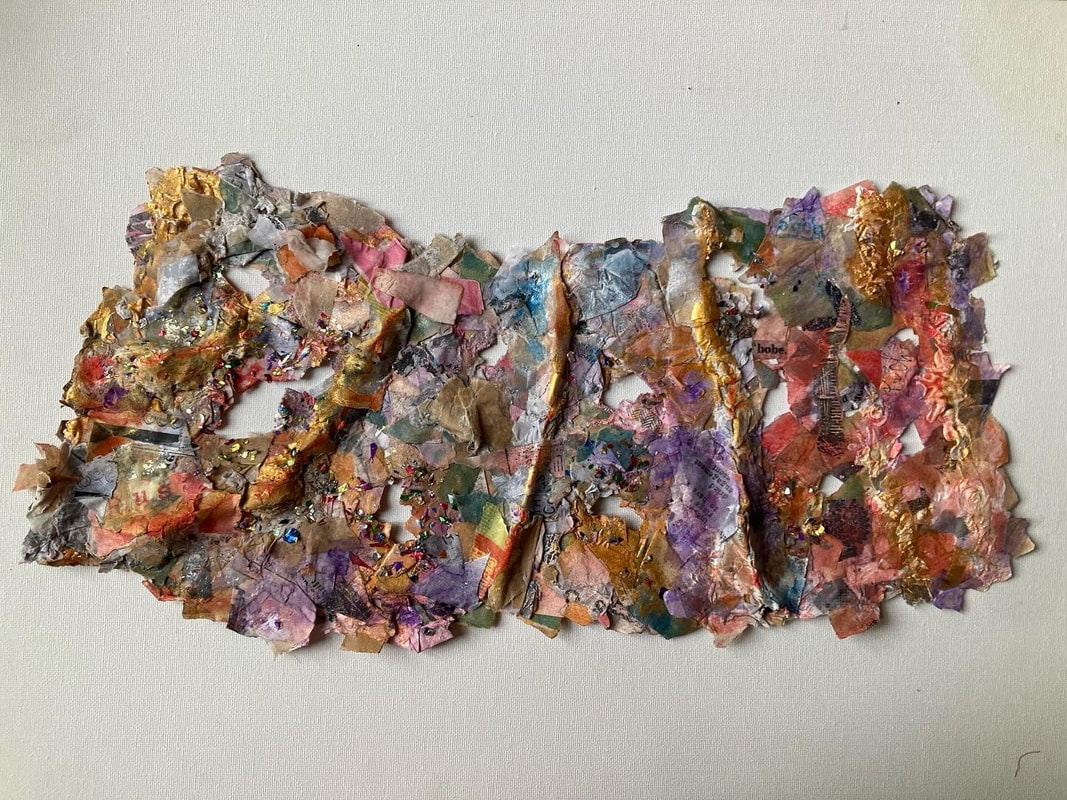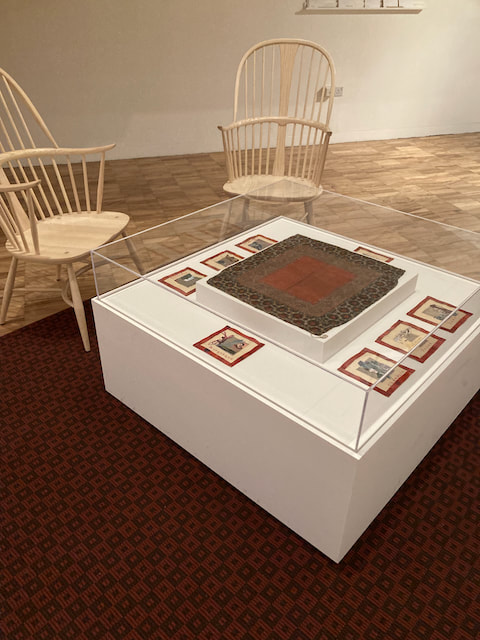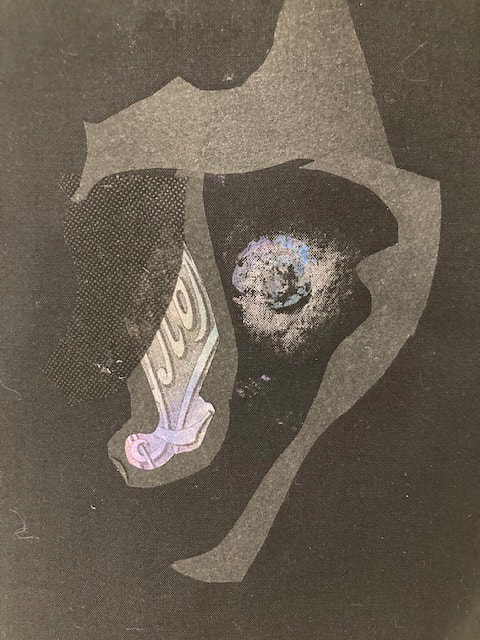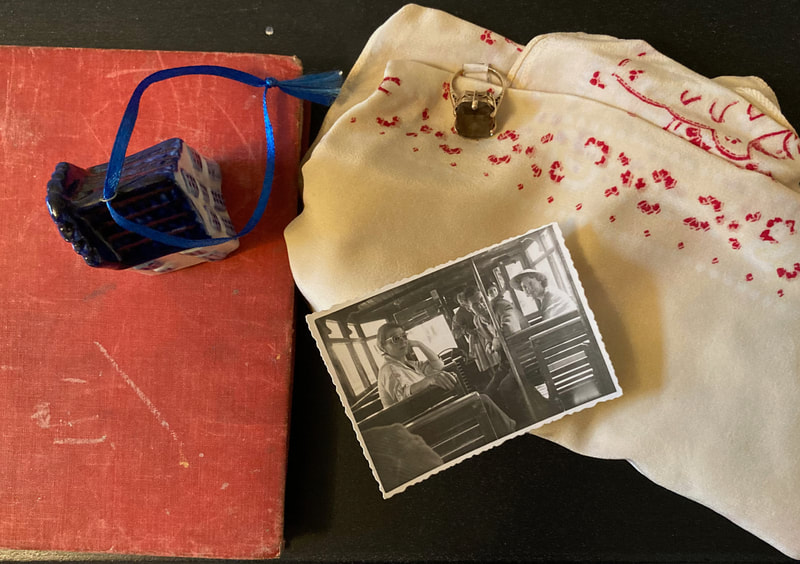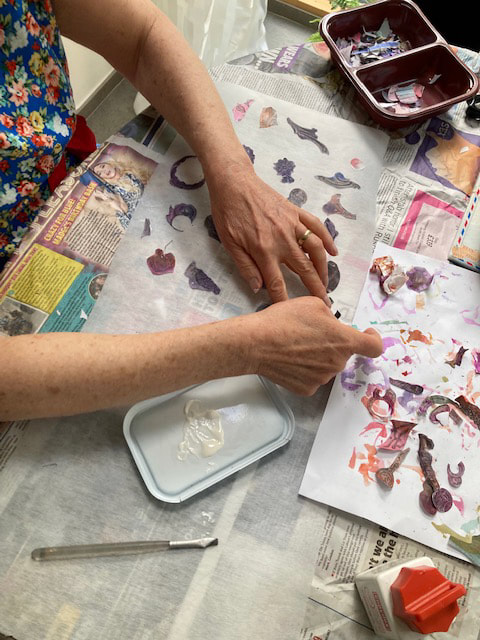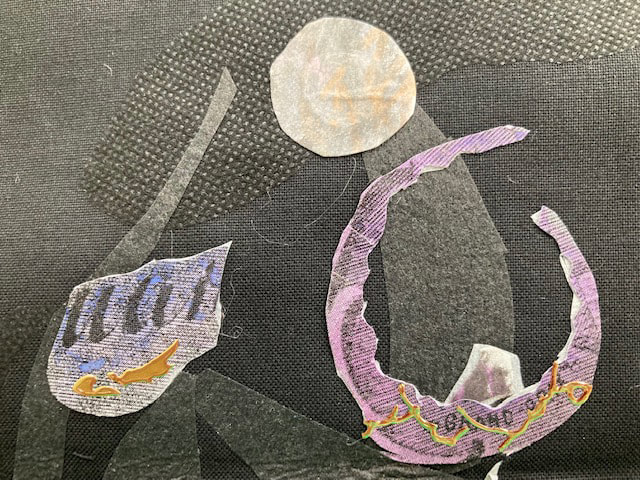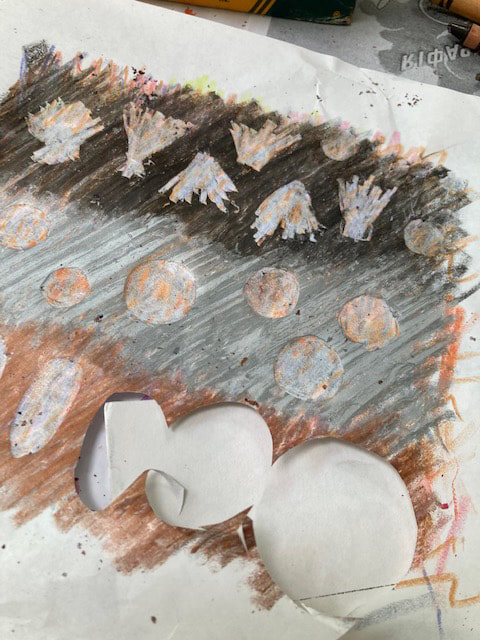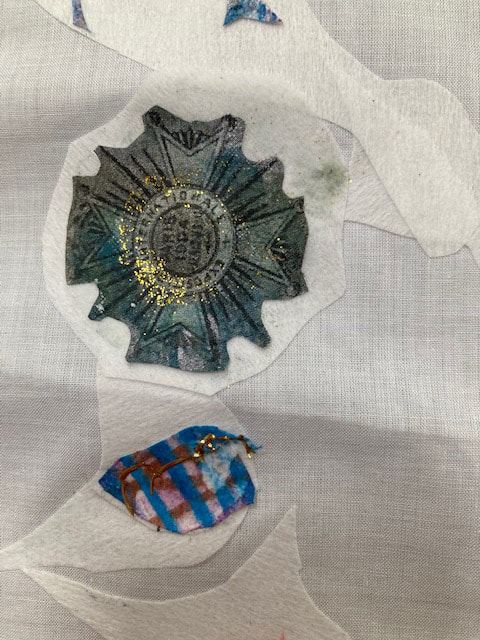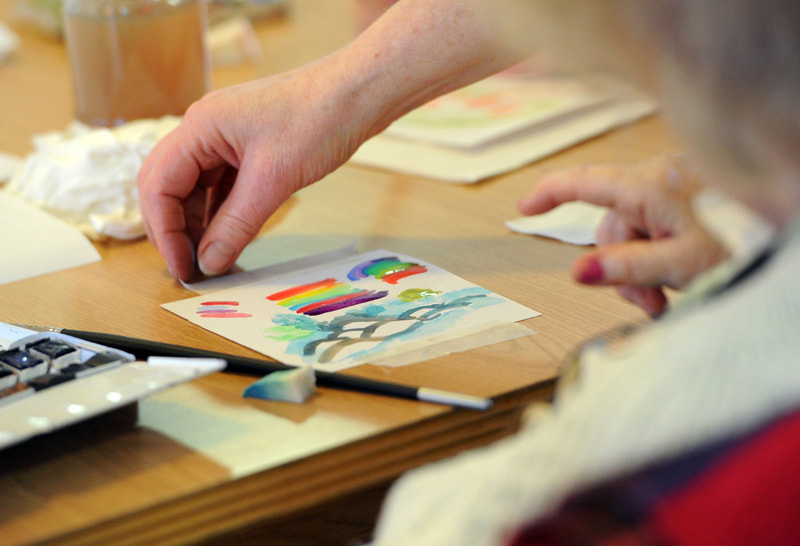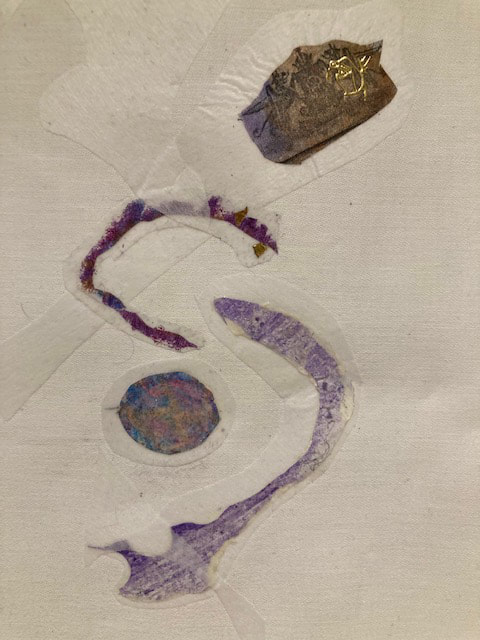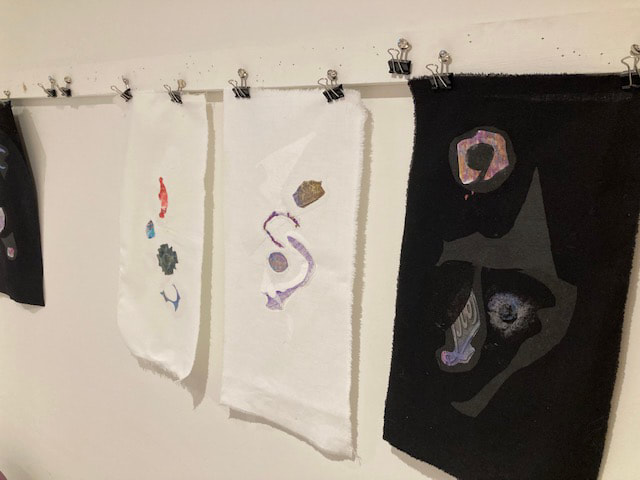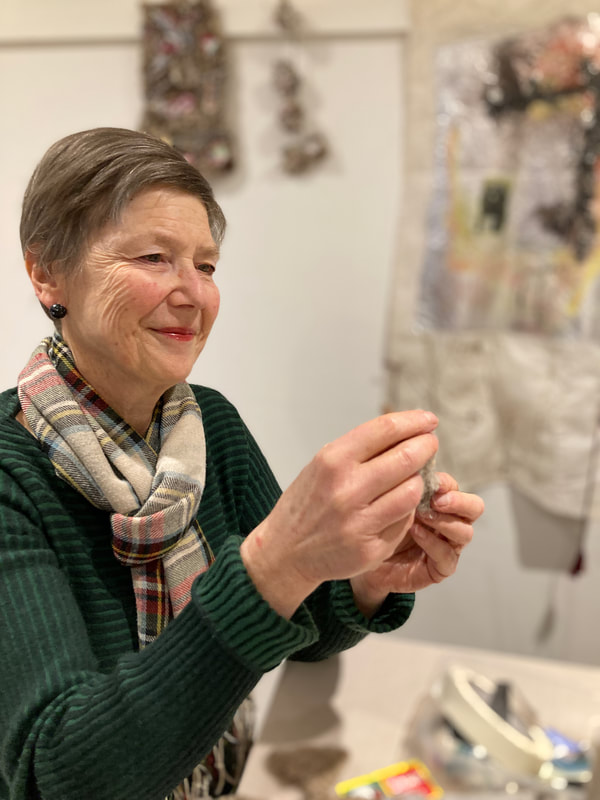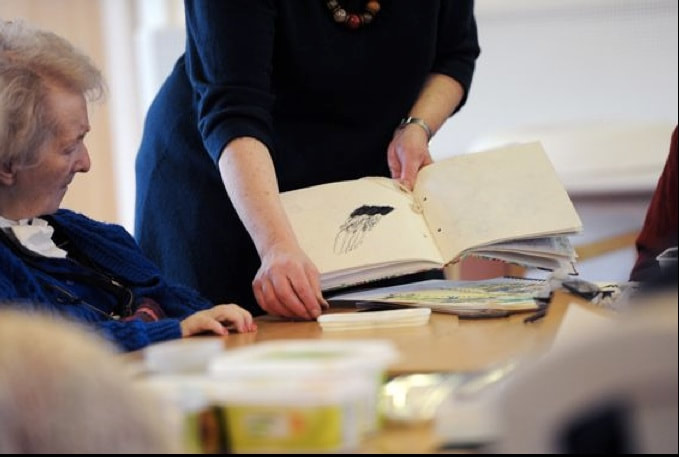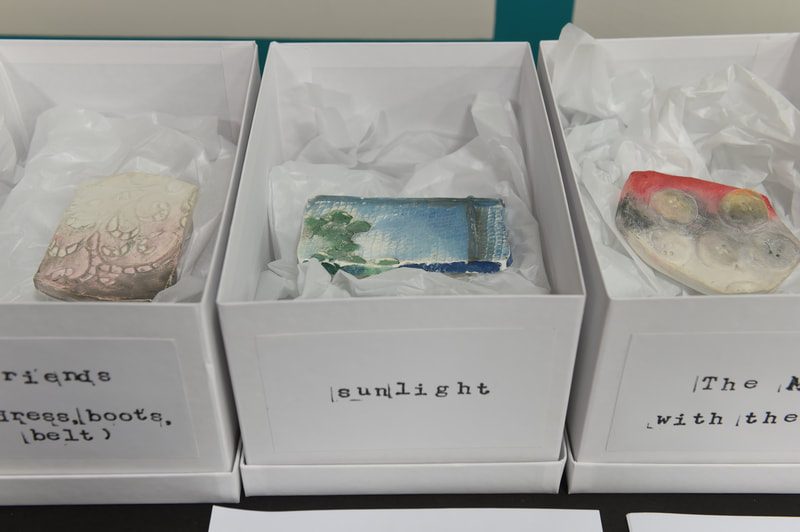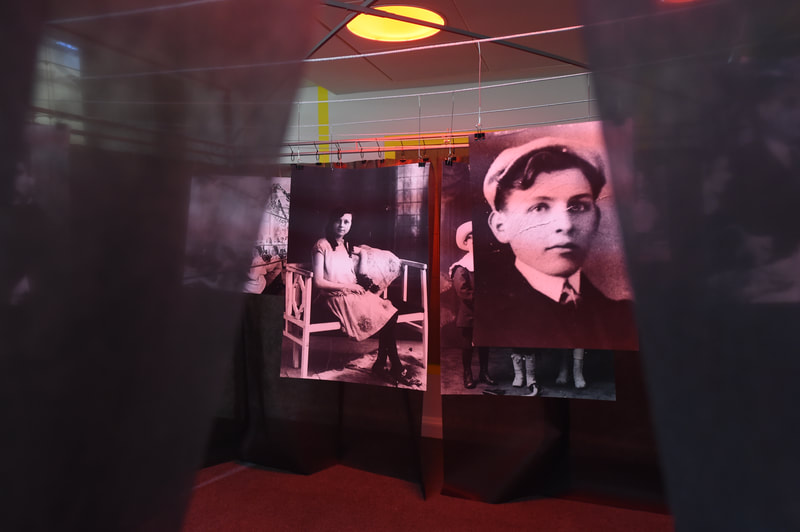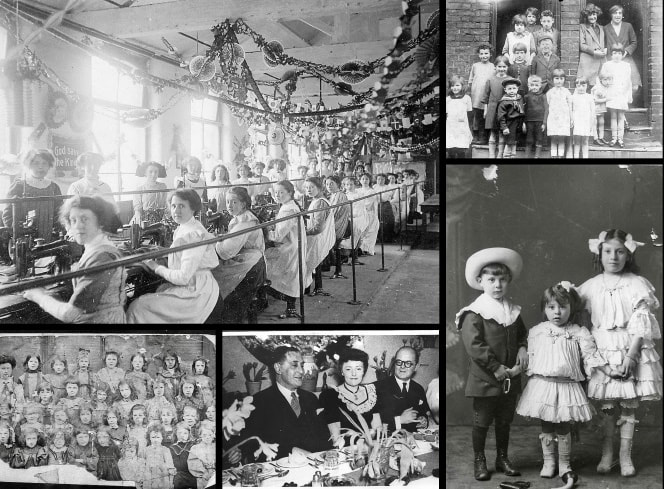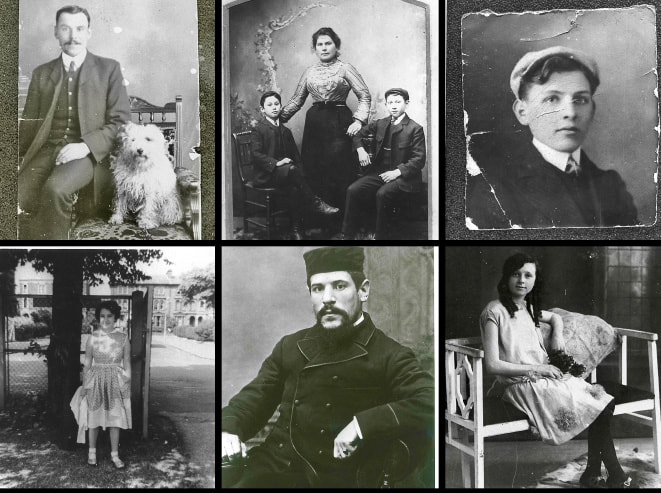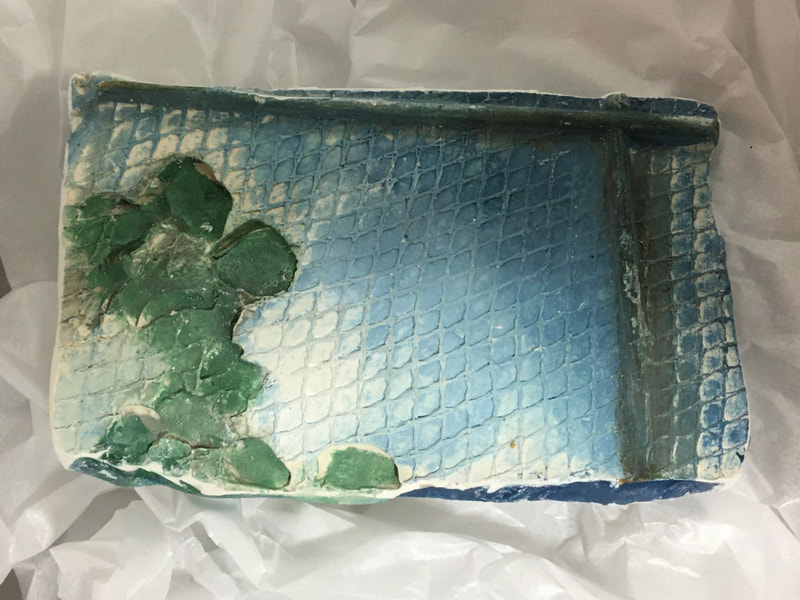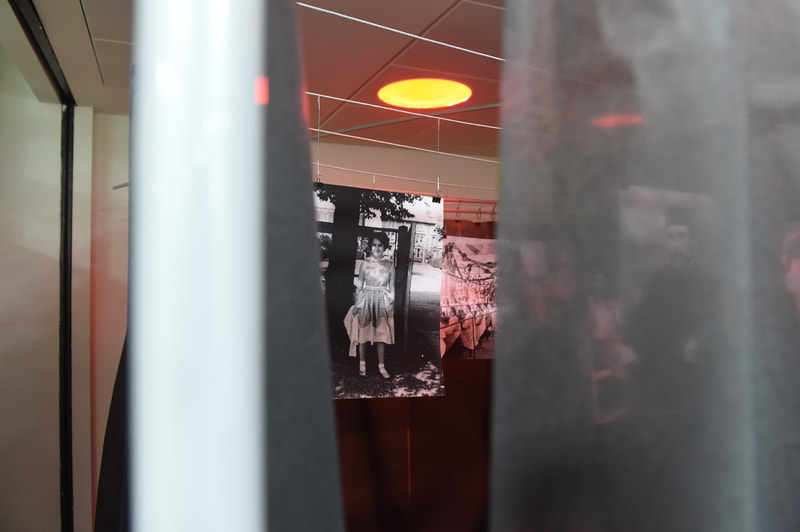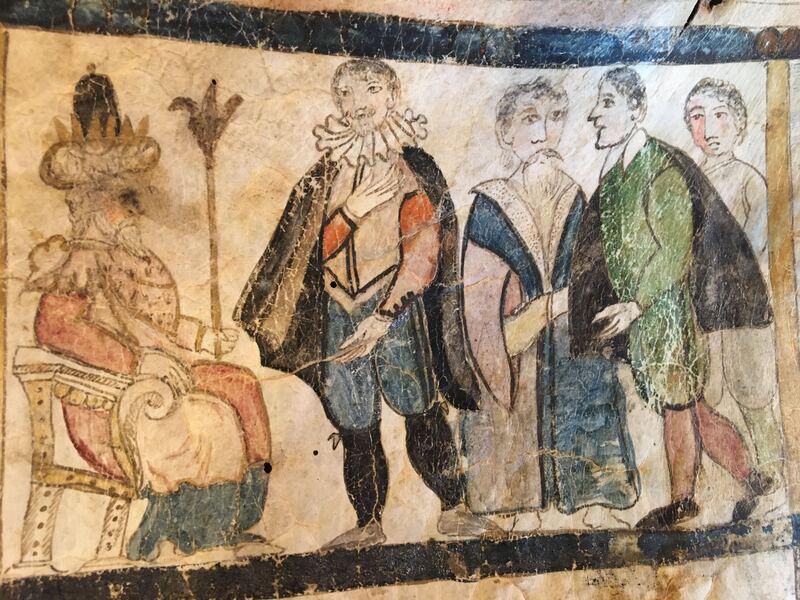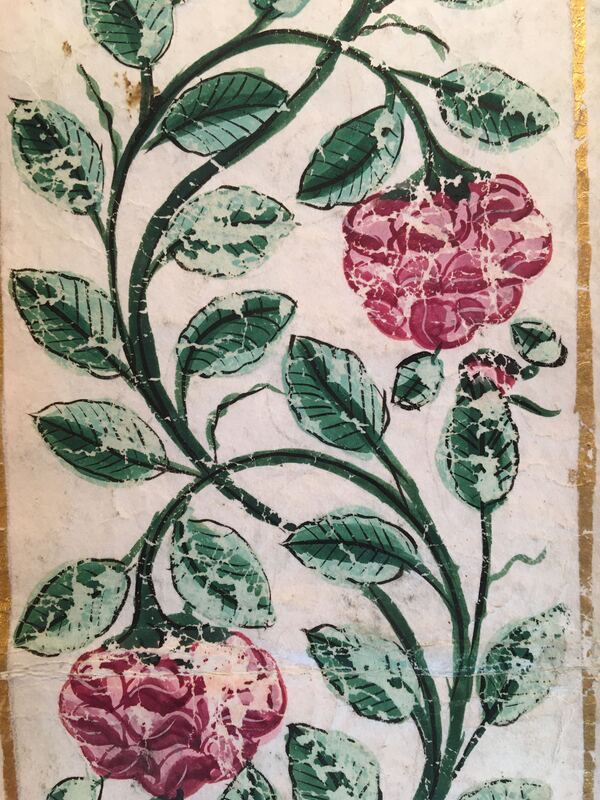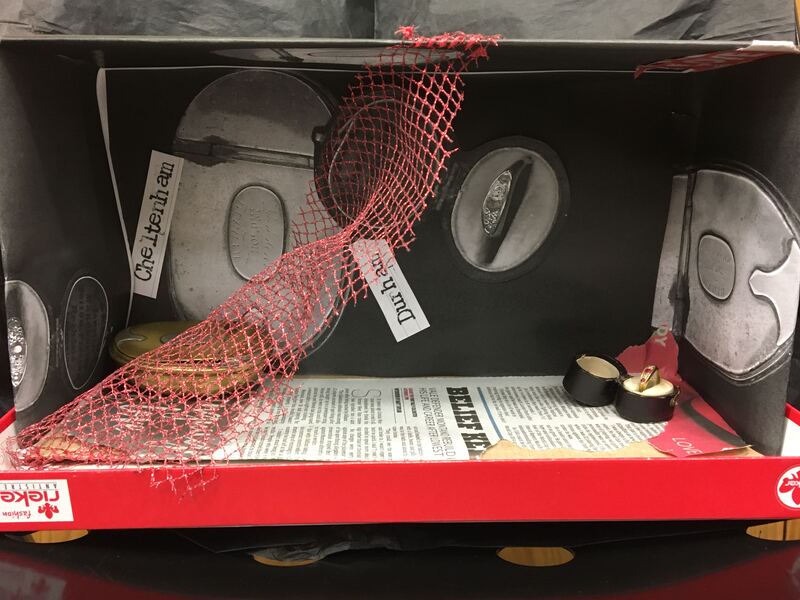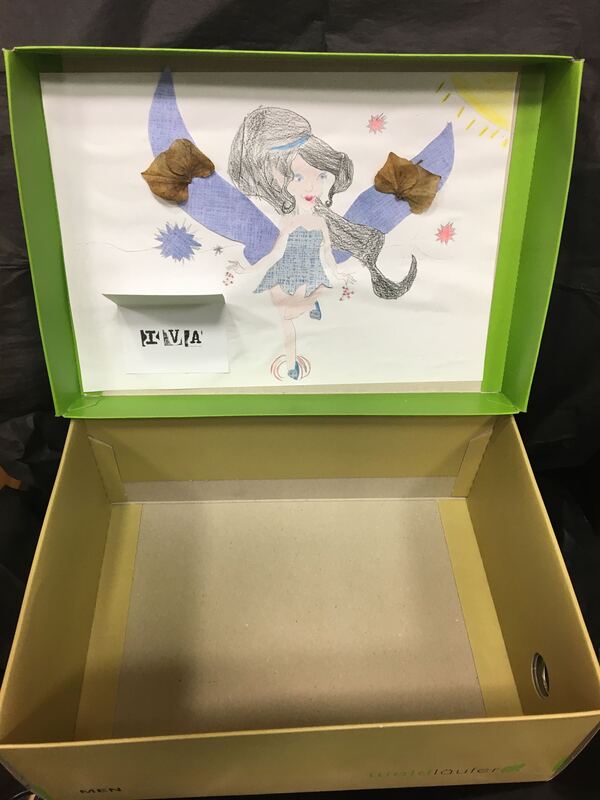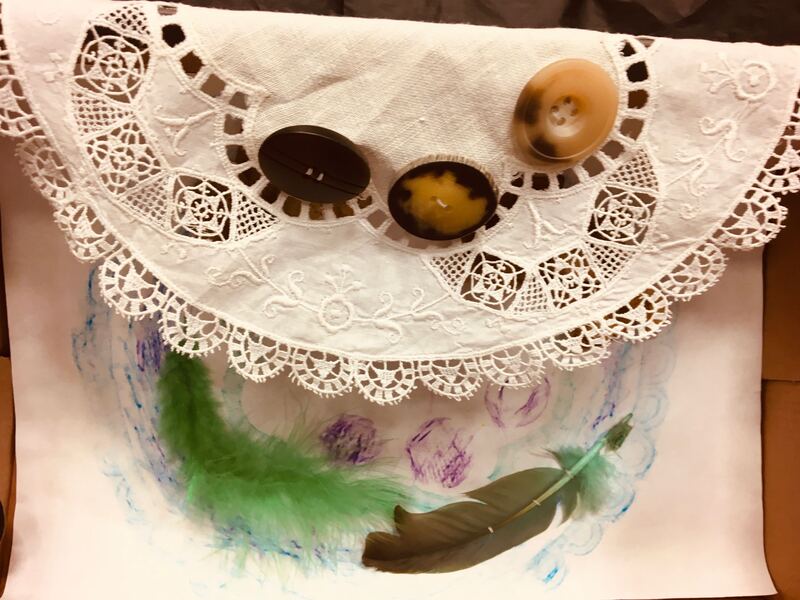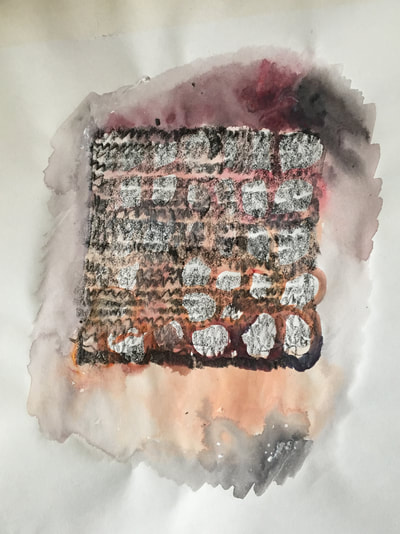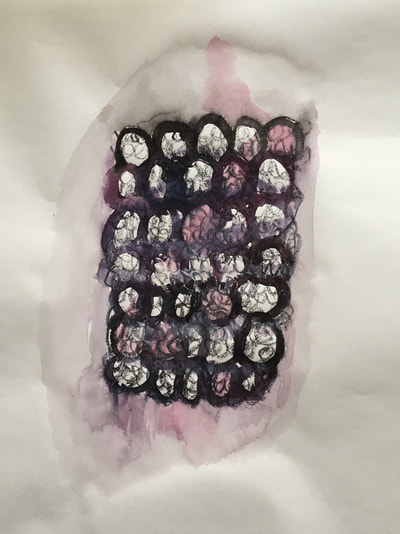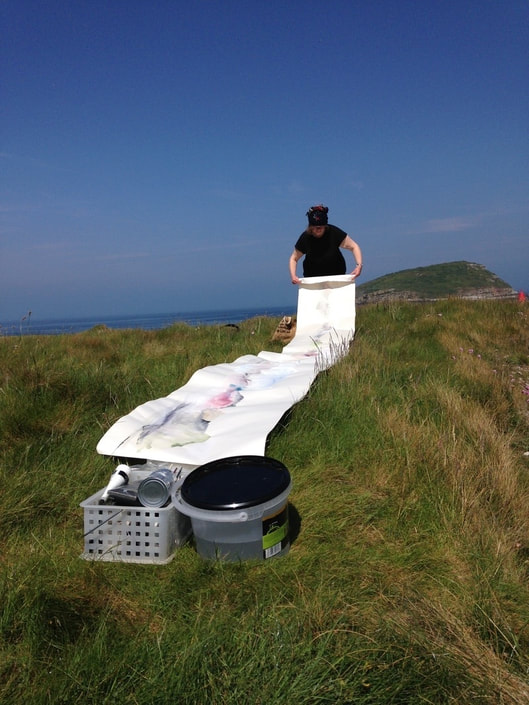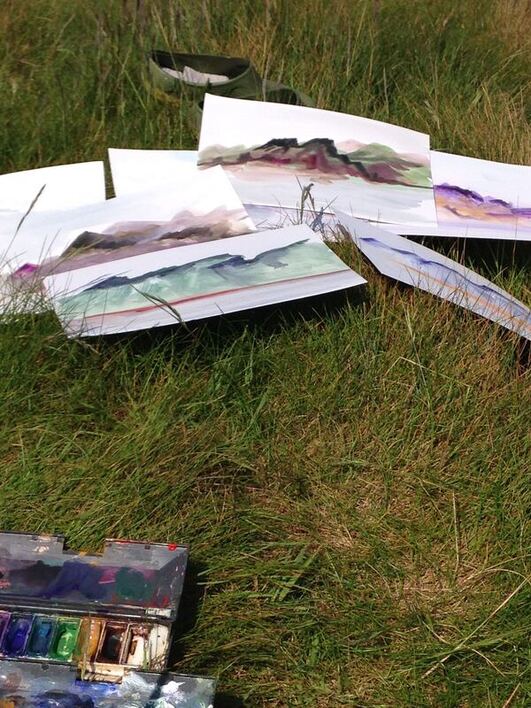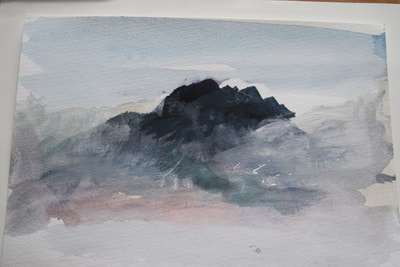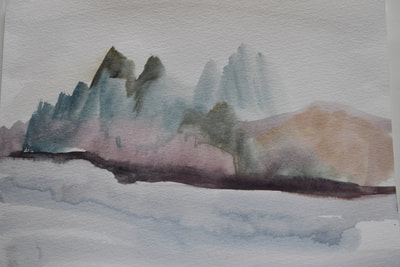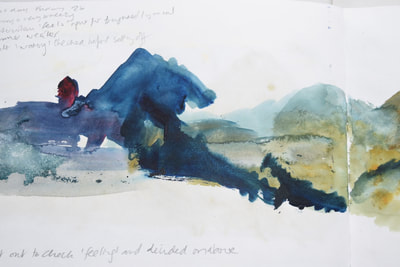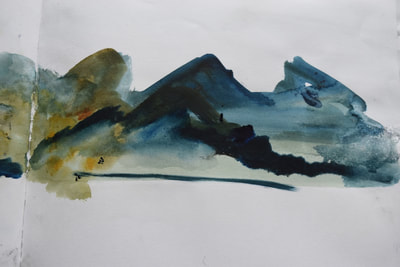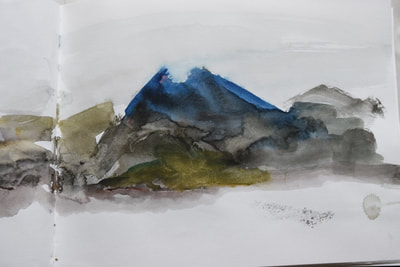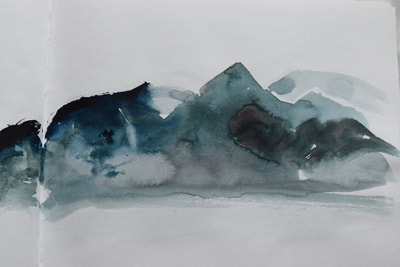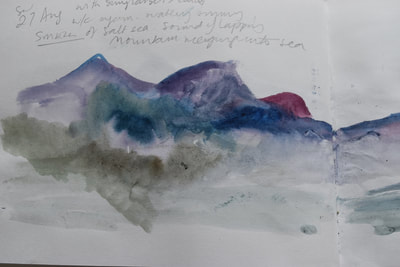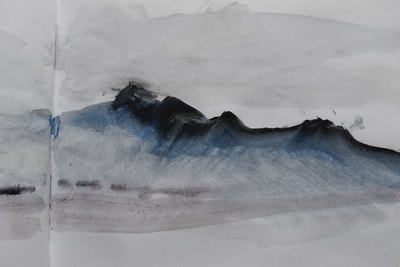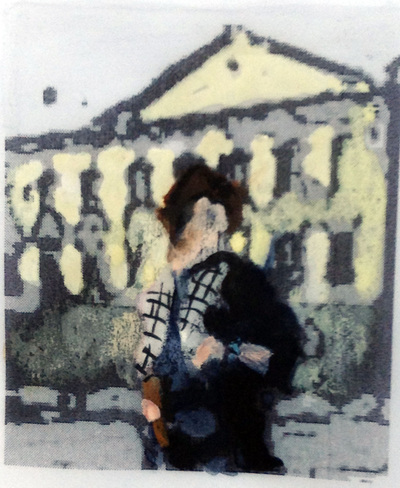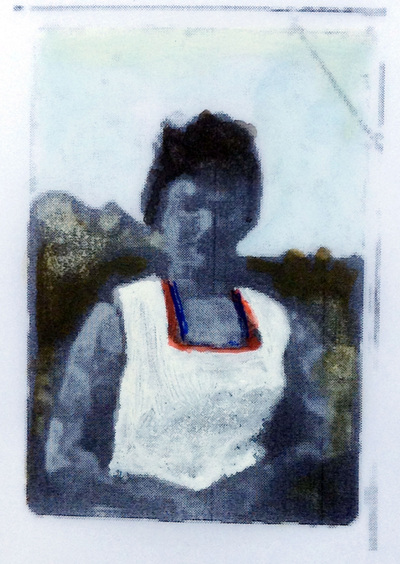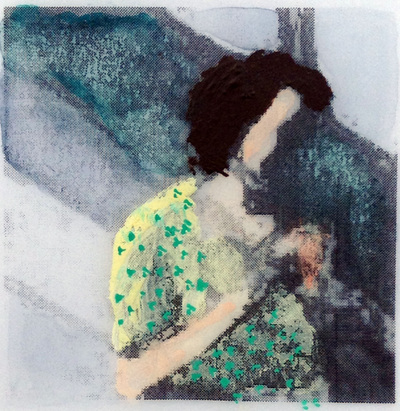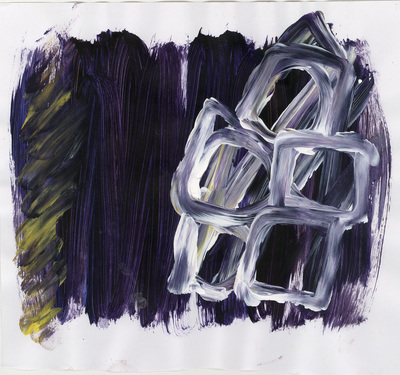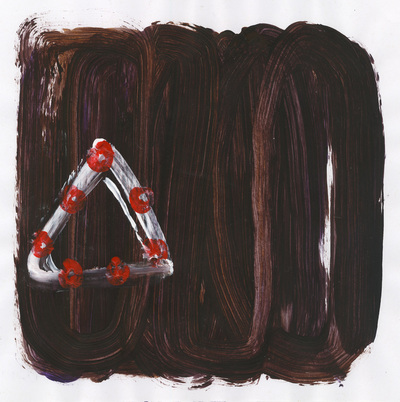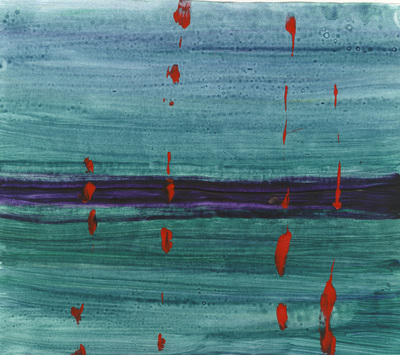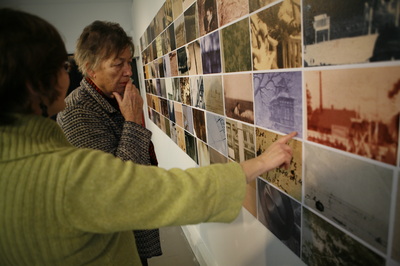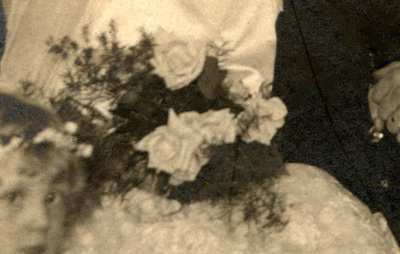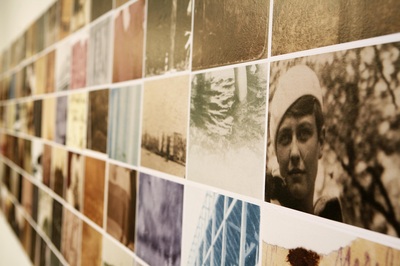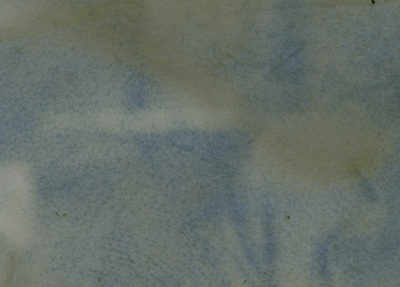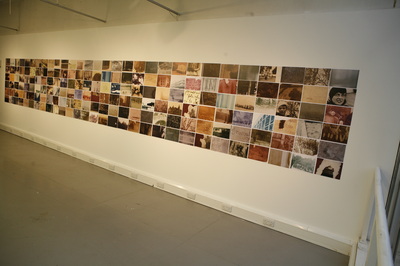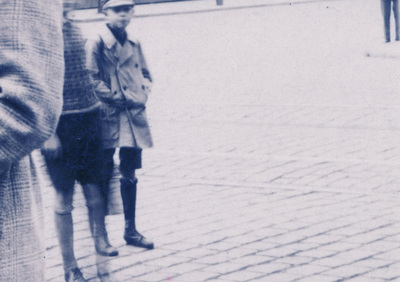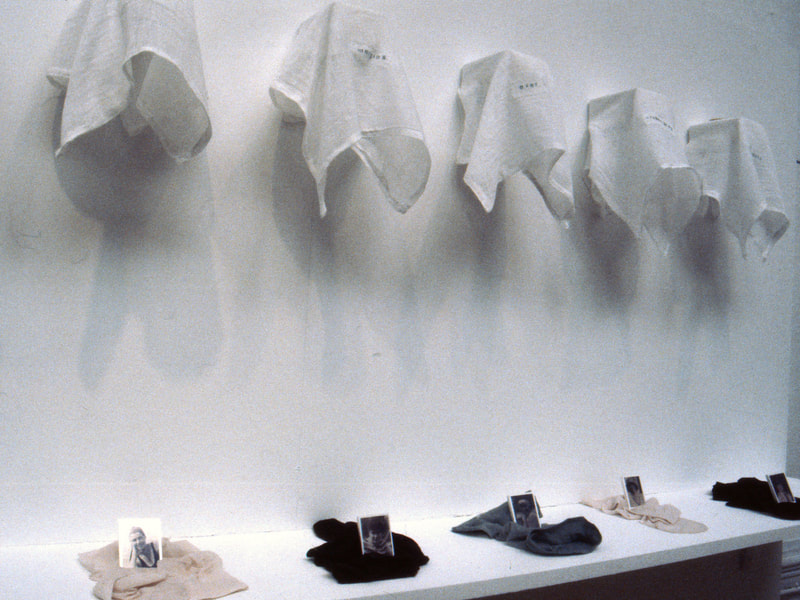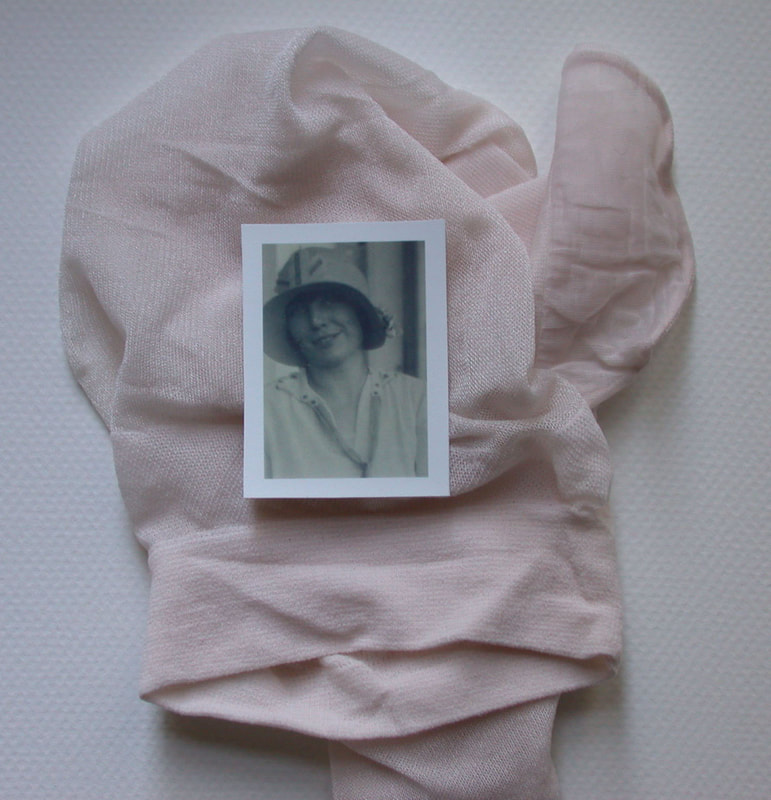Project Stories
Exhibitions and projects take place in many different spaces and have included The Whitworth Art Gallery, University of Manchester, Kultur Bunker Cologne, The Pankhurst Centre, Cornerhouse, Manchester and Spurr House Day Care Centre, Bury.
Exhibitions and projects take place in many different spaces and have included The Whitworth Art Gallery, University of Manchester, Kultur Bunker Cologne, The Pankhurst Centre, Cornerhouse, Manchester and Spurr House Day Care Centre, Bury.
Bobe 2024
Here is a set of notes from my sketchbook about making 'Bobe'.
The piece is one of around eight works made in the new studio space at Rogue.
Still tackling the issue of MATERIAL AS SUBJECT.
The 'collage' needs to be brought further into the centre of the process.
Tearing of the many photocopies from the album and loose Noskwith/Saksoshansky photos/postcard copies important to reflect upon.
The very act of tearing is key.
It allows for the idea of forced fragmentation - the pulling apart from home/each other. The pain of leaving Lodz/Odessa/Chemnitz.
And then
The business of processing (digesting?) the fear of what has happened and making a new story.
The bucket is full of water and the little pieces are scattered in. Like a cookery session. Then LEFT.
Like time - space to age/change
Overnight and through several days PROCESSING happens.
Softening of the dispersed pieces - mixed up images. Located by chance one next to another in confusion. Akin to childhood confusion about silences, gaps, FRAGMENTS.
Then pulling these out to remake, remould into a new AMALGAMATED object. A survival piece. An object that puts the pieces back together again....
Russian Mat 2023
The 'Russian Mat' series of small collages was made as part of the 'Traces of Displacement' project during 2023 at The Whitworth Art Gallery. I was invited to select an object from the collection that could reflect the theme of the research project; to view gallery collections from the viewpoint of displacement.
A red Russian mat conjured up dreams for me of mealtimes in Lodz apartments and noisy Odessa basements. Like the threads in our family worn and fragmented and now brought together by powerful (post)memory. The mat marks a gathering space to reflect upon the generations weaving through the world on paths newly connected. Like the sky blue and sunflower yellow threads they make joyful patterns as they go. Just as the needle journeys between the cloth’s front and back, past and present are brought together. The deep red coloured centre recalling a nesting space akin to the constant warmth of home.
We project our emotions into the gaps collections and curators leave as objects are stored away once their original purpose is lost. In this case the mat was collected to inspire better design and shelved without a history. A pdf of the exhibition leaflet is available (traces_of_displacement_exhibition_guide.pdf).
A red Russian mat conjured up dreams for me of mealtimes in Lodz apartments and noisy Odessa basements. Like the threads in our family worn and fragmented and now brought together by powerful (post)memory. The mat marks a gathering space to reflect upon the generations weaving through the world on paths newly connected. Like the sky blue and sunflower yellow threads they make joyful patterns as they go. Just as the needle journeys between the cloth’s front and back, past and present are brought together. The deep red coloured centre recalling a nesting space akin to the constant warmth of home.
We project our emotions into the gaps collections and curators leave as objects are stored away once their original purpose is lost. In this case the mat was collected to inspire better design and shelved without a history. A pdf of the exhibition leaflet is available (traces_of_displacement_exhibition_guide.pdf).
Fold 2022
'Fold' explores complex themes concerning creativity, care, imagination, respect, compassion and security.
It sits within the 'relationships between staff and residents strand' of the Culture Box Show, which formed the final part of an 18 month AHRC project exploring how creative activities can support people living with dementia in care homes.
I have taken the notion of the Deleuzian fold to generate an interactive piece. Deleuze describes how the world is interpreted as a body of infinite folds and surfaces that twist and weave through compressed time and space - a metaphor for describing the complex and evolving research on creativity and dementia and my own practice. The final piece explores in the process of the making the notion of Deleuzian fold, using overlaid, flattened and compressed motifs made from wax, paper and layers of interfacing fabric. As the artist Jack Whitten describes in his journals the ‘form’ you choose to make the work (the process of the making) should reflect the ideas you are trying to convey.
'Fold' takes the form of a series of collages using painted, printed and fabric elements. Made so that each piece can be displayed in the care homes easily, I worked with the materials to find the best way to reflect the concept of the Deleuzian fold as described above. A ‘performance’ element of the work involves the display of all 60 collages together around a rectangular table before the pieces are separated, so that when viewed a linear reading of the series is overturned.
This ‘interwoven’ artwork contains both the repeated motifs from 30 years of my practice with the significant repeat motifs collected from care home residents. 'Fold' reflects how elements of my own art practice find a synergy with the creative responses made by care home residents with dementia when expressing deep seated memories in 2D form.
Significant objects that were passed down by my mother and grandmothers (and oral histories from childhood) have often been the instigation of artworks in different forms both 2D and 3D, They contain motifs of longing for a past that was unknown but are consistently similar in form and shape.
It sits within the 'relationships between staff and residents strand' of the Culture Box Show, which formed the final part of an 18 month AHRC project exploring how creative activities can support people living with dementia in care homes.
I have taken the notion of the Deleuzian fold to generate an interactive piece. Deleuze describes how the world is interpreted as a body of infinite folds and surfaces that twist and weave through compressed time and space - a metaphor for describing the complex and evolving research on creativity and dementia and my own practice. The final piece explores in the process of the making the notion of Deleuzian fold, using overlaid, flattened and compressed motifs made from wax, paper and layers of interfacing fabric. As the artist Jack Whitten describes in his journals the ‘form’ you choose to make the work (the process of the making) should reflect the ideas you are trying to convey.
'Fold' takes the form of a series of collages using painted, printed and fabric elements. Made so that each piece can be displayed in the care homes easily, I worked with the materials to find the best way to reflect the concept of the Deleuzian fold as described above. A ‘performance’ element of the work involves the display of all 60 collages together around a rectangular table before the pieces are separated, so that when viewed a linear reading of the series is overturned.
This ‘interwoven’ artwork contains both the repeated motifs from 30 years of my practice with the significant repeat motifs collected from care home residents. 'Fold' reflects how elements of my own art practice find a synergy with the creative responses made by care home residents with dementia when expressing deep seated memories in 2D form.
Significant objects that were passed down by my mother and grandmothers (and oral histories from childhood) have often been the instigation of artworks in different forms both 2D and 3D, They contain motifs of longing for a past that was unknown but are consistently similar in form and shape.
Dark Room 2020
Dark Room 2020
Made for 'The Festival of Belonging' in Manchester, 'Dark Room' explored questions of identity and ownership of images.
For 'Dark Room' eleven photographs from the collection of The Manchester Jewish Museum were reprinted and placed (as though drying in a photographer's darkroom) in an immersive environment. They were precariously hung together, uncurling gently to emphasise the capture of a fleeting moment. Local communities discussed the feelings they evoked, sharing stories about their own photographs, where both the history of the photographer and of the places or people photographed (as in the eleven photographs) had been lost or were unknown.
For 'Dark Room' eleven photographs from the collection of The Manchester Jewish Museum were reprinted and placed (as though drying in a photographer's darkroom) in an immersive environment. They were precariously hung together, uncurling gently to emphasise the capture of a fleeting moment. Local communities discussed the feelings they evoked, sharing stories about their own photographs, where both the history of the photographer and of the places or people photographed (as in the eleven photographs) had been lost or were unknown.
A small series of Plaster of Paris sculptures 'Dark Room Fragments', reflect on the details that, as Barthes describes, wounds us when a particular part of a photograph 'pricks' the viewer.
Lodz Banquet 2019
'Lodz Banquet' was made in collaboration with the Centre of Jewish Studies at The University of Manchester. As part of The '50 Objects Project' in 2019 a selection of two objects from the John Rylands Collection of Jewish artefacts became the focus for a piece of work that forms part of a larger research project with invited artists.
The objects - an Indian marriage contract and a lavishly illustrated Italian scroll of Esther prompted memories of textiles and wallpapers designed by lost family in Europe before the war. The scroll tells of Esther's bravery and wit, saving the Jewish people from harm. Feasting and banquet scenes cover a large section of the text, and similarly the marriage contract is decorated with images of celebration: lush foliage, flowers and animals.
'Lodz Banquet' is a celebration of many women's lives - three women from Lodz (our great grandmother Helena, and her daughters Tycia and Rusha), and the many unknown women who had sewn the 'found' cloths. They may have sewn their own celebratory cloths and feasted at Purim, making meals and reflecting upon the story of Esther. The embroidered cloths were 'found' textiles made by women whose stories are lost. In the piece the embroidery stitches (copied to match) mingle with those made by those of unknown embroiderers. The histories of these lost women (who probably died in Auschwitz) are shared by us all.
Working with local charity shops and a group of women as part of the project, memory boxes were created after conversations about ritual, 'curating' and loss.
Derm 2018
A series of gouache, ink and pencil paintings concerned with the importance of touch. Different knitted blankets (shown in the fifties family photographs) were used to possibly make recognition easier for identifying sleeping identical twin babies. They were made during the research project the artist ran training young doctors in visual literacy in the Dermatology Research Centre at The University of Manchester.
Oma Dreaming 2017 - present
'Oma Dreaming' is a developing project exploring the connection between the desire to capture the 'spirit of the mass' in landscape and the nuances of feeling developing in the state of motherhood/grandmotherhood. The work sets out to create a visual language to celebrate new life, and threads of maternal experience.
Wednesday Notes 2014
The 'Wednesday Notes' installation was made up of painted ricepaper scrolls, and a series of monoprints centred on the repeated motifs made by women at a Bury care home. Enmeshed with motifs repeated from the artist's sketchbooks over 10 years, the installation bore witness to the working process of the interconnected relationships built up with the women at the care home. Together we created a 'Museum of Us' that led the way to the making of the pop up installation in Bury town centre.
Lace and Longing 2012
The Lace Archive at Nottingham Trent University (NTU) provided material for 'Lace and Longing'. My research explored the link between post war Nottingham lace designers and the rich collection of textiles and portfolios at NTU. After working with ex students and staff a series of small gouache and watercolour paintings were made over a year, reflecting on the importance of textiles in touching deep memories, and the emotional potency of an archive.
Cornerworks 2007
A temporary installation made in 2007, 'Cornerworks' was constructed out of 180 laser prints at The Chapman Gallery, University of Salford. Each print was glued in a specific position to the gallery wall so that the work read as form of text. After two weeks it was deliberately peeled off with water and steamer, recalling the destruction of memories after trauma or time. It was made after a forensic examination of a faded family album, where the dark corners and edges of interwar photographs are recoloured and reimagined to suggest profound absences and losses. The suggestion of wallpaper references the family business in Germany, and the Langhammer wallpaper collection in Chemnitz.
Flag 2007
'Flag' was made on the steps of the Bundestag during my first visit to Berlin in 2007.
The flag dances in the wind to the simple tune of a Yiddish lullaby.
The flag dances in the wind to the simple tune of a Yiddish lullaby.
From Bohemia 2006
From Bohemia from Helena Tomlin on Vimeo.
In 'From Bohemia' images of a collection of antique glass are overlaid by a conversation with our mum in 2006 about a piece of Bohemian glass that arrived as an engagement present in Nottingham from Chemnitz in 1953. The video explores the way domestic objects are a rich source for myth making and are charged with an energy that feeds our imaginations. The piece also asks questions about how family histories are transmitted and about the malleability of memory.
Palace of Tears 2004
Palace of Tears from Helena Tomlin on Vimeo.
Filmed in 2004 at the train station Friedrichstrasse in Berlin 'Palace of Tears' explores how the present crosses over with the past. The piece suggests that memories are enmeshed in the fabric of the station that and we cannot escape from these, even after borders change, and the fabric of public buildings is renewed. These memories, present in windows tracks and walls, intersect with the voices of today’s travellers.
Eleven Women 2003
'Eleven Women' is based on photographs of my maternal grandmother (grammy) before she was exiled from her country of birth.
Marriage to a Polish Jew in 1930 made her an outcast from her own family and country (Germany) and she found herself in England, perceived once again as a mistrusted outsider. A series of small details of her before her journey across Europe have been scanned and remade into small passport sized photographs. Some of these photographs were given to me as a child as my grandmother did not wish to have a reminder of her youth in Germany. Others have been scanned from an album that she tried to destroy in middle-age. The passport format is used in this piece to emphasise the sense of fragmentation and ‘border crossing’ that occurred shortly after these pictures were taken.
These small photographs are displayed pinned to stockings (my grandmother was a party goer and sometime model). The symbolic use of the stocking as resting spot and ‘nest’ also alludes to the fortunes of her adopted Jewish family who were able to thrive due to business interests in lingerie…The small stones sited with the individual photographs are a symbol of her need to remake her identity as a Jew. The stones symbolise an act of remembrance (making a marker at a grave, rather like the placing of flowers) – and is an act of respect ,
Marriage to a Polish Jew in 1930 made her an outcast from her own family and country (Germany) and she found herself in England, perceived once again as a mistrusted outsider. A series of small details of her before her journey across Europe have been scanned and remade into small passport sized photographs. Some of these photographs were given to me as a child as my grandmother did not wish to have a reminder of her youth in Germany. Others have been scanned from an album that she tried to destroy in middle-age. The passport format is used in this piece to emphasise the sense of fragmentation and ‘border crossing’ that occurred shortly after these pictures were taken.
These small photographs are displayed pinned to stockings (my grandmother was a party goer and sometime model). The symbolic use of the stocking as resting spot and ‘nest’ also alludes to the fortunes of her adopted Jewish family who were able to thrive due to business interests in lingerie…The small stones sited with the individual photographs are a symbol of her need to remake her identity as a Jew. The stones symbolise an act of remembrance (making a marker at a grave, rather like the placing of flowers) – and is an act of respect ,
Her Tree 2002
Her Tree from Helena Tomlin on Vimeo.
Touching on issues around memory, trauma and exile 'Her Tree' depicts the silent folding of a cloth embroidered by three generations of women, including our grammy, mum and my sister. Originating in central Europe and embroidered at particular times in the women’s lives, such as during pregnancy or illness, the cloth has come to symbolise survival and celebration as well as separation and dispossession. 'Her Tree' marks the connections between women and the passing on of knowledge and culture between generations.
Apfel Strudel 2002
The series of A6 photographs that makes up 'Apfel Strudel' was made as a text for the cafe wall at Cornerhouse, Manchester. It formed part of an exhibition 'Conversations on the Subject of Feminism'. This piece is a celebration of a strong maternal bond; the sharing of stories during the peeling and wrapping of fruit.
